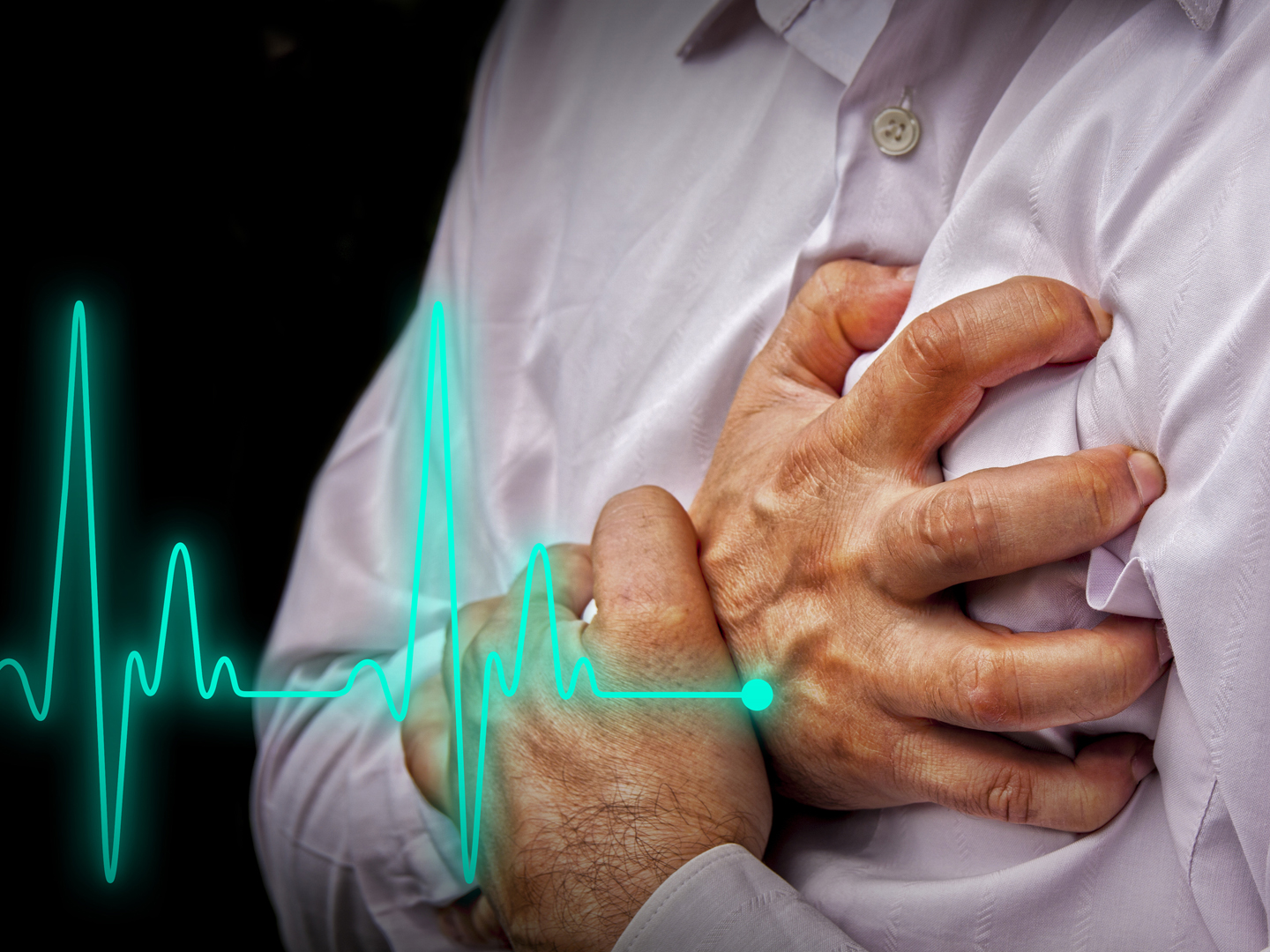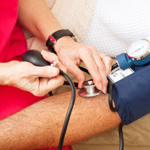Transient Ischemic Attack (TIA)

What is a transient ischemic attack?
A transient ischemic attack (TIA), sometimes called a mini-stroke, occurs when blood flow to a part of the brain is briefly interrupted. This can cause stroke-like symptoms that typically last an hour or two, but sometimes persist as long as a day. A TIA is considered a warning sign that a stroke may occur sometime in the future. About one-third of all those who have a TIA eventually will have a stroke and one-tenth of this number will have a stroke within three months (half of these strokes occur within 48 hours of the TIA).
What are the symptoms of a transient ischemic attack?
Symptoms can include numbness or weakness in the face, arm, or leg that tends to occur on only one side of the body. Other symptoms include confusion or difficulty in speaking or understanding speech; trouble seeing in one or both eyes; difficulty with walking, dizziness, vertigo or loss of balance and coordination. Additional symptoms may include:
- Change in alertness
- Changes in feeling, including touch, pain, temperature, pressure, hearing, and taste
- Memory loss
- Trouble swallowing
- Trouble reading or writing
- Inability to recognize objects or people
- Loss of bladder or bowel control
- Clumsiness, or trouble walking
- Numbness or tingling on one side of the body
- Personality, mood, or emotional changes
- Vision problems including double vision, loss of all or part of vision.
When signs and symptoms last longer than 24 hours or cause lasting brain damage, the episode is considered a stroke. The clinical symptoms of TIA typically last less than an hour, but prolonged episodes can occur. While the classical definition of TIA included symptoms lasting as long as 24 hours, advances in neuroimaging have suggested that many such cases actually represent minor strokes with resolved symptoms rather than true TIAs.
What are the causes?
The underlying cause is often a buildup of cholesterol-laden deposits (plaques) in an artery or one of its branches supplying oxygen and nutrients to the brain. Plaques that narrow arteries can decrease blood flow or lead to the development of a clot. Other causes include a blood clot moving to the brain from another part of the body, most commonly from the heart. The biggest risk factor for TIAs and stroke is high blood pressure.
Other major risk factors include:
- Atrial fibrillation
- Diabetes
- Family history of stroke
- Carotid artery disease
- Heart disease
- Poor blood flow in the legs caused by narrowed arteries
- High cholesterol
- Cigarette smoking.
You may be able to prevent a future stroke by dealing with one or more of the following modifiable risk factors that underlie TIAs and strokes:
- High blood pressure. The risk of having a stroke begins to increase at blood pressure readings above 115/75 millimeters of mercury (mm Hg). Your age, and whether or not you have diabetes or other medical problems, factor into treatment of high blood pressure and what the goal of treatment should be.
- Cardiovascular disease. This includes heart failure, heart defects, infection or an abnormal heart rhythm.
- Carotid artery disease. Clogging of the blood vessels in the neck that lead to the brain.
- Peripheral artery disease (PAD). Clogging in the blood vessels that carry blood to the arms and legs.
- Cigarette smoking. Smoking increases the risk of blood clots, raises blood pressure and contributes to the development of cholesterol-containing fatty deposits in the arteries (atherosclerosis).
- Physical inactivity. The risks posed by a sedentary lifestyle can be countered with 30 minutes of moderate intensity exercise on most days of the week.
- Diabetes.Diabetes increases the severity of atherosclerosis and the speed with which it develops.
- High cholesterol. Recent evidence indicates that added sugar – in the form of table sugar (sucrose) or high-fructose corn syrup – is probably a greater contributor to heart disease than is saturated fat. In fact, certain components of full-fat dairy foods may be cardio-protective. As a general rule, don’t consume foods with added sugars. In particular, don’t consume soft drinks, which cause rapid spikes and dips in blood sugar levels. The result can be overeating, obesity and heart disease. Additionally, heart-damaging trans-fatty acids can reduce HDL levels and raise LDL levels. Avoid foods with “partially hydrogenated oil” listed among the ingredients on labels. Trans-fats are found in many margarines and in most heavily processed foods, as well as in snack foods such as chips, crackers and cookies, and in the oils used to cook fast-food French fries, doughnuts and movie popcorn. If you can’t control your cholesterol through dietary changes and exercise, you may need a statin drug or another type of cholesterol-lowering medication.
- High levels of homocysteine. Elevated blood levels of this amino acid can lead to thickening and scarring of arteries, making them more susceptible to clots.
- Excess weight. A body mass index of 25 or higher and a waist circumference greater than 35 inches in women or 40 inches in men increases risk.
- Heavy drinking. Men who drink alcohol should limit the amount to no more than two drinks daily; women should limit intake of alcoholic beverages to one drink per day.
- Use of illicit drugs. Avoid them, including cocaine.
- Birth control pills. If you use any type of hormone therapy, discuss the risk of TIA and stroke with your doctor.
How are transient ischemic attacks diagnosed?
Often, the symptoms and signs of a TIA will have disappeared by the time you get to the hospital. For that reason, diagnosis may be based on your medical history alone. However, a complete physical examination will likely be performed by your doctor to at least identify any heart and blood vessel problems present, check your blood pressure, and determine whether there is an abnormal sound called a “bruit” in the carotid artery in the neck or other artery (a bruit is caused by turbulent blood flow).
The following tests may be done:
- A head CT scan or an MRI of the brain. Strokes show up on these tests but TIAs don’t.
- An angiogram, CT angiogram, or MR angiogram to see which blood vessel may be blocked or bleeding.
- An echocardiogram when doctors suspect that a blood clot has traveled from the heart to the brain.
- An ultrasound examination to look for narrowing of the carotid arteries in the neck.
- An EKG and heart rhythm monitoring to check for the presence of an irregular heartbeat.
Because initially there is no way to tell whether symptoms stem from a TIA or a stroke, any stroke-like symptoms should be viewed as an emergency and medically evaluated within an hour of their occurrence.
What is the conventional treatment?
Because a TIA is a warning of a possible future stroke, the goal of treatment is to prevent a stroke. If you have had a TIA within the last 48 hours, you may be admitted to the hospital for observation and tests to identify the cause of your symptoms. Afterward, preventive measures are usually prescribed that may include drug treatment for high blood pressure, heart disease, diabetes and blood disorders, if present. To reduce the risk of blood clotting, doctors may recommend long-term treatment with aspirin or one of several blood thinning drugs.
If tests reveal a clogged artery, surgery (for example, carotid endarerectomy) may be recommended.
What therapies does Dr. Weil recommend for a transient ischemic attack?
Because TIAs come and go so quickly, no specific treatment is needed, but since they are warnings of a future stroke, Dr. Weil recommends the following preventive measures:
- Control your blood pressure either through lifestyle changes or medication.
- Exercise: People who exercise consistently have a lower risk for stroke.
- If you smoke – quit.
- Limit alcohol intake.
- Manage your diabetes if you have it (keep tight control of blood sugar levels).
- Maintain healthy cholesterol levels.
- Nutrition and Supplements:
- Focus on your diet. Follow a diet designed for those with high blood pressure or heart disease – doing so may help prevent a stroke.
- People who have atrial fibrillation may need treatment with a blood-thinning prescription drug, such as warfarin.












